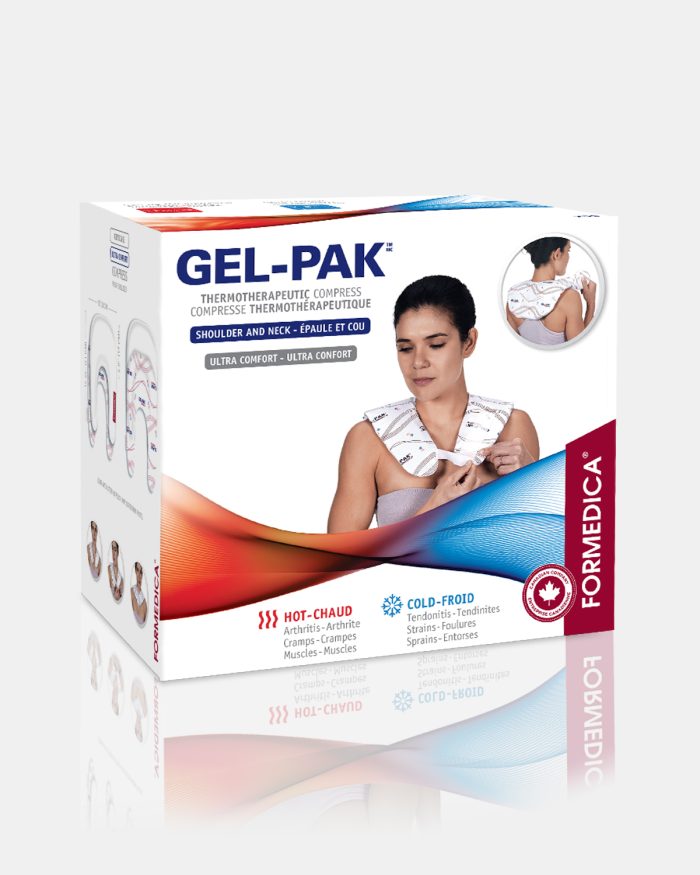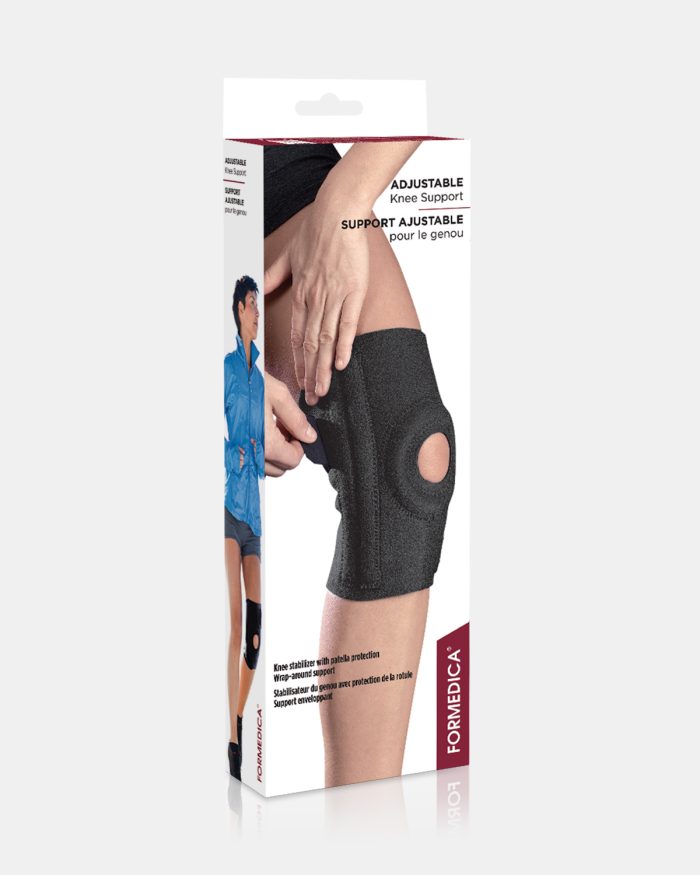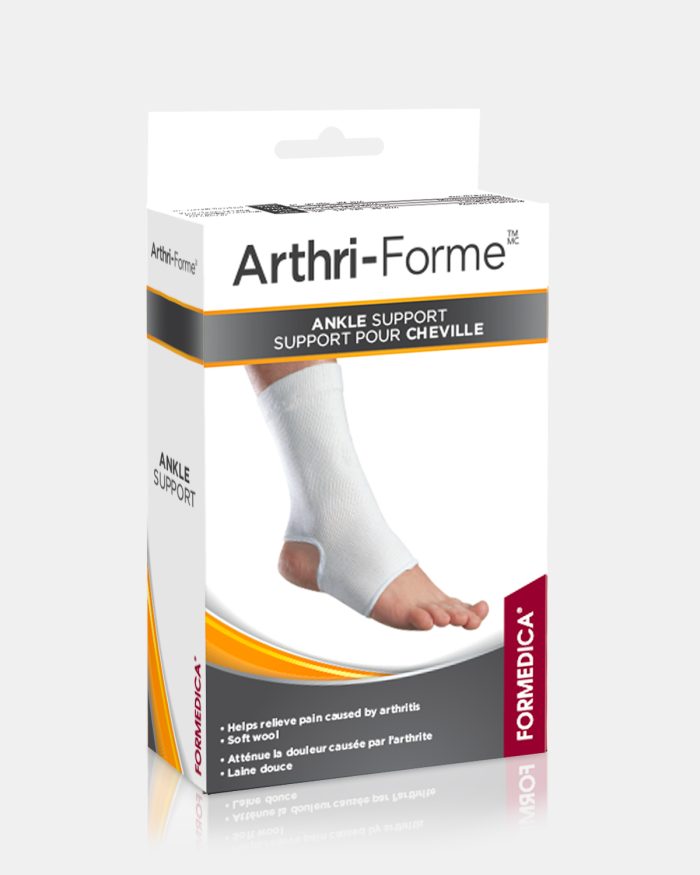Jogging is a complete physical activity, and an excellent way to stay in shape, control your weight, manage your stress, and regulate sleep… and your wallet. All you need is a good pair of running shoes. Almost anyone can take up jogging as a hobby – no matter where you are or what time it is. It’s not surprising that people are showing more and more interest in this sport, to the point of breaking the participation record at the 2012 edition of the Montreal Marathon. However, each year, approximately one third of runners suffer from an injury related to the inadequate or excessive practice of this sport. These few tips should help you avoid becoming a statistic.
Main jogging injuries
Your muscles and lower-limb joints, most particularly legs, knees and ankles, suffer the most from inadequate or excessive jogging.
Patellofemoral syndrome
The patellofemoral syndrome is characterized by kneecap pain that occurs when the knee does not complete the extension-flexion movement properly, that is, by respecting the axis of the joint. It is brought on by the irritation of the cartilage between the kneecap and the thigh bone (femur).
Pain worsens when climbing up stairs or kneeling down. It can also occur while sitting, when there is not enough room to stretch your legs – for instance, at the movie theatre. All sports that require flexion of the knee make us more prone to this type of ailment.
Iliotibial band syndrome
The Iliotibial band syndrome (or IT band) is caused by irritation and inflammation that occur due to repeated friction between two knee structures: the long fibrous band located on the external side of the thigh (IT band) and the protuberance of the femur.
Pain occurs in the external part of the knee. It is often brought on by running at an incline, but more particularly at a decline. Because the intensity of the pain tends to increase with distance, it usually forces runners to stop.
Achilles tendinitis
Achilles tendinitis is characterized by severe pain in the heel or Achilles tendon (a very sensitive part of the body located below the calf, on the heel). It may also cause pain or stiffness in the calf area.
This pathology is caused by the swelling of the Achilles tendon or micro fractures in different areas of the tendon. It is very common in joggers, and tends to occur at the onset of the training period. Repeated excessive effort and ill-fitted footwear are often the source of the problem.
If the tendinitis is not treated promptly, it can lead to a rupture of the Achilles tendon, a much more severe and disabling pathology.
Plantar fasciitis
Plantar fasciitis is a foot injury resulting from the stretching or rupture of the fibrous membrane that extends from the heel bone to the toes. This membrane, which forms the sole of the foot, is called plantar fascia.
Fasciitis is essentially symptomized by pain under the heel. Joggers are more prone to it because every part of their feet structure is called to work often and intensely. It is important to treat this type of injury promptly, as complications can be disabling.
Medial tibial stress syndrome (MTSS)
Medial tibial stress syndrome (commonly known as “shin splints”) is a leg injury that causes pain in the shin area. A series of repetitive movements, as in the case of jogging, result in small muscle tears.
MTSS causes shin pain or sensitivity, swelling and lameness. Pain is often gradual, and may become very intense. MTSS often occurs due to a change in running style, an increase in running distance, or prolonged jogging sessions on hard surfaces.
Hamstring strain
The “pull” occurs when a muscle is stretched beyond its capacity, or during a sudden contraction. An extreme strain can lead to partial or complete tear of the muscle. The hamstrings, located in the back of the thigh, are the muscles most vulnerable to pulls.
Hamstring strains are a common sports injury, which is often caused by stretching, excessive running or direct muscle trauma. This injury results in brutal and intense pain, along with muscle stiffness.
Stress fractures
A stress fracture is a type of incomplete bone fracture that is not attributed to a specific shock or trauma, but to repetitive stress, such as repeated pounding when jogging. It is characterized by a fine tear in the bone, most often a weight-bearing, lower-limb bone.
The fracture typically causes localised pain at a very specific area of the bone. When jogging, pain is very intense at first, moderate midway, severe at the end and for a few hours after the run.
The most frequent causes of stress fractures include excessively intensive training, abrupt changes in training routine, jogging on very hard surfaces, or inadequate footwear.
How to treat injuries to start off again on the right foot
Any pain, intense or moderate, felt after a jog should have you seeking medical advice to avoid complications and disabling repercussions. Your physician will know which treatment is right for you.
Here are a few recommendations that should help bring you some relief and put you on the right track to a recovery.
Rest
First and foremost, rest the injured area. If you experience pain, it’s a sign that you need to reduce the frequency, duration or intensity of your training.
Ice
Applying ice or a cold compress to your injury for approximately ten minutes will alleviate the pain and reduce swelling. Repeat several times a day.
Dressings and support
In certain cases, supports, dressings or splints could be prescribed as a way to compress or stabilize the affected area.
Plantar orthotics
Plantar orthotics can help to temporarily alleviate joint pressure. Your physician or physiotherapist will refer you to a specialist if your injury requires this type of treatment.
Stretching
Stretch tense muscles – for instance, your calf muscles in the event of an Achilles tendinitis, or your hamstrings if they are strained.
The best way to stay in the running
Of course, it’s better to be safe than sorry. Following these basic rules will reduce your risk of injury considerably:
Running shoes
The majority of running injuries are caused by worn-out or inadequate shoes. If you are contemplating running regularly, it is essential that you purchase a pair of shoes specifically designed for jogging. They must provide great stability and have the ability to absorb shocks.
Note that these shoes must be replaced at every 1,200 kilometres. Beyond that, they risk losing their shock-absorbing properties.
The 10% rule
To ensure a safe training pace, you should follow the 10% rule. That means, never increase your distance or training time by more than 10% per week, particularly if you are just starting out.
Warming up
Stiff and cold muscles are more prone to traumas and injuries. It is therefore essential to spend a few minutes warming up to prepare your muscles, activate your heart, and gradually increase your body temperature. Your warm-up should be spent doing a few minutes of brisk walking, followed by trotting exercises. Perform a few knee lifts, as well as arm, neck and trunk rotations for approximately 10 minutes.
Jogging surface
When possible, run on natural trails, not on asphalt or cement, which are known for being hard on your joints.
Staying hydrated
It is essential to stay well hydrated throughout the duration of your training session. Lack of hydration will make you more vulnerable to certain injuries, namely tendinitis. Ideally, you must remember to drink before you feel thirsty.
Stretching
If it has been proven that stretching before a run does not increase your risk of injury, it remains nonetheless beneficial after your training session. Doing so helps you get rid of excess lactic acid in your muscles, relieve your body, and reduce tension in your joints.
Sources
http://www.volodalen.com/24blessures/blessures.htm
http://www.actionsportphysio.com/fr/main_nav/rubrique-sante/conseils/blessures/blessures-de-course/
http://lesjoggeusesblogueuses.blogspot.ca/p/les-blessures-reliees-au-jogging.html
Courir sans blessures : Le jogging bienfaits et précautions.


